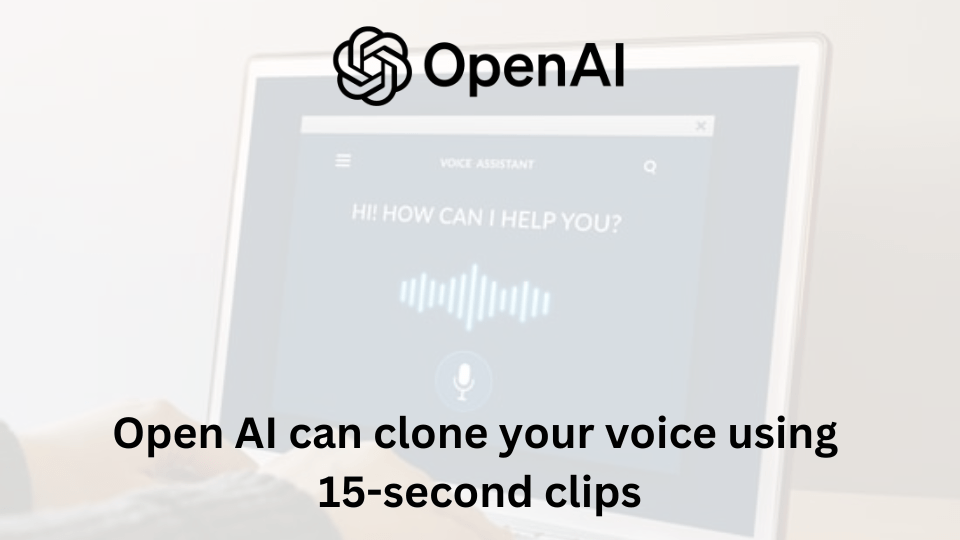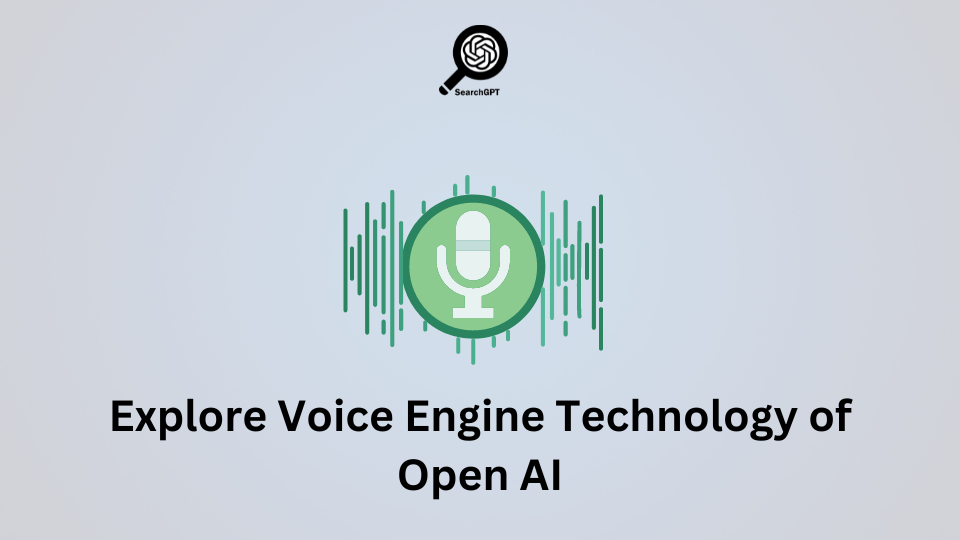Open AI is perpetually evolving and iterating over its artificial intelligence products to help people trunking, through the Voice Engine technology as well. Explore new technology and the safety research that goes with it.
1. What is Voice Engine?
OpenAI has developed a new model called Voice Engine. Voice Engine is a model capable of creating custom voices.
2. How does Voice Engine work?
The technology uses a text-to-speech (TTS) model to generate highly realistic audio from written text.
The model learns to mimic human speech by analyzing paired audio and transcription data. It can then create audio in various voices, accents, and speaking styles.
To generate a specific person’s voice, the system only requires a 15-second audio sample and the corresponding text. Rather than customizing the model for each individual, it applies a noise reduction process to match the input audio’s characteristics.

3. Text-to-speech engine Features
Voice Engine delivers enhanced user experiences with engaging features that are highly applicable.
- Read Assistive: Utilize the powerful AI algorithm to generate natural and more emotionally engaging human-like speech. The training can benefit young children who are weak in reading.
- Voice Modulation: Acoustic Modeling can imitate many voices but maintain original voice emotion and tone.
- Voice Engine for conversational AI – helps generate consistent responses in different language contexts.
- Customization in real-time: Customize tone, pitch, speed and more according to different needs or brand image.
- Fast, seamless content generation: Voice AI Development drives out voice enabled output to aid in marketing, communication and creatives.
4. Voice Engine Research and Development
Although Voice Engine is not yet ready for widespread use, Open AI is confident in its product and has proven its safety and reliability for users.
This Acoustic Modeling is internally tested with trusted developers and will be released in late 2022 with a public and proprietary model. Under the efforts of Open AI, AI Voice Technology represents the continuation of the principles, building safe systems.
From there, Voice Engine carries the potential for applications for ChatGPT starting from September 2023. The application of API to convert text to speech enhances the user experience. This has marked a small step towards the safety of AI Voice Technology.
Voice Assistant can use realistic, genuine, emotional voices from professional voice actors.
Continuing to build on its Voice Engine hype, Open AI released a basic TTS API in November 2023 for developers to add voice to websites. Open AI worked with voice actors to create these 15-second audio samples, which serve as the ‘voices’ for this API.
The future of the Voice Engine will be applied with the GPT-4o model, exploring new audio possibilities and minimizing the risks involved.
Might you also like: SearchGPT vs ChatGPT: What is the Difference?

